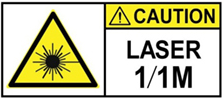Safety and installation warnings
Warning
Read the safety warnings and installation instructions before using, installing or connecting the system to the power source.
|
Personnel |
Only a skilled person or an instructed person should be allowed to install, replace, or service this equipment. |
|
Environment |
Access This unit is intended for installation in restricted access areas. A restricted access area can only be accessed by skilled, instructed or qualified personnel. GPS To reduce the risk of electric shock, the shield of the coaxial cable must be connected to the building earth. CAUTION: Do not locate the antenna near overhead power lines or other electric light or power circuits, or where it can come into contact with such circuits. When installing the antenna, take extreme care not to come into contact with such circuits, as they may cause serious injury or death. For proper installation and grounding of the antenna, please refer to national and local codes (e.g. U.S.: NFPA 70, National Electrical Code, Article 810, Canada: Canadian Electrical Code, Section 54). Ambient temperature Make sure the ambient temperature does not exceed the maximum ambient temperature allowed for the Cisco Nexus 3550-T Programmable Switch Platform (104F, 40C). If installed in a closed or multi-unit rack assembly, the ambient temperature of the rack during operation will be greater than room ambient. Air flow Install the Nexus 3550-T in the rack in a way that provides sufficient air flow for safe operation. Mechanical loading Mount the Nexus 3550-T in the rack with a mechanical load that is evenly distributed and not excessive. Circuit overloading Ensure that no overloading of the circuits occurs which might affect overcurrent protection and supply wiring. The ratings are provided on the unit. Earthing Ensure that the rack-mounted equipment is earthed reliably. Consider using supply connections other than direct connections to the branch circuit (e.g. use of power strips). |
|
Power |
Check that your Nexus 3550-T is rated to be used with the mains power
in your country. Total Nexus 3550-T rating:
|
|
Before servicing |
Disconnect the two power supply cables before servicing. |
|
Power cables |
Ensure the Nexus 3550-T uses mains power cables approved in the country of operation |
|
Clock battery |
CAUTION: The Nexus 3550-T has a battery-powered real-time clock circuit. There is a danger of explosion if the battery is replaced incorrectly. Replace only with CR2032 type coin cells. Discard used batteries according to the manufacturer's instructions. |
Laser safety
|
CAUTION: SFP modules used in the Nexus 3550-T can be a CLASS 1
LASER PRODUCT. Invisible laser radiation may be emitted from the
aperture of an SFP module when the fiber cables are
disconnected. Do not stare into the open aperture of an SFP module and avoid exposure to laser radiation when a fiber cable is disconnected from an SFP module. |
21 CFR 1040
|
Pluggable optical modules comply with IEC 60825-1 Ed. 3 and 21 CFR 1040.10 and 1040.11 with or without exception for conformance with IEC 60825-1 Ed. 3 as described in Laser Notice No. 56, dated May 8, 2019.
Conforme à la norme 21 CFR 1040.10 et 1040.11, sauf conformité avec la norme IEC 60825-1 Ed. 3., comme décrit dans l’avis relatif au laser no. 56, daté du 8 mai 2019. |
|
Caution |
To reduce risk of electric shock or fire, installation of the equipment must comply with local and national electrical codes. |
|
Caution |
This equipment must be grounded. To reduce the risk of electric shock, the power cord, plug or combination must be connected to a properly grounded electrode, outlet or terminal. Verification of the protective earthing of the socket outlet should be carried out by a skilled person. |
|
Warranty void if opened |
Do not open the case of the Nexus 3550-T The warranty of the Nexus 3550-T will be void if the case is opened. |
|
FCC Compliance |
This equipment has been tested and found to comply with the limits for a Class A digital device, pursuant to part 15 of the FCC Rules. These limits are designed to provide reasonable protection against harmful interference when the equipment is operated in a commercial environment. This equipment generates, uses, and can radiate radio frequency energy and, if not installed and used in accordance with the instruction manual, may cause harmful interference to radio communications. Operation of this equipment in a residential area is likely to cause harmful interference in which case the user will be required to correct the interference at his own expense. |
WEEE

This page was last updated on Mar-23-2021.